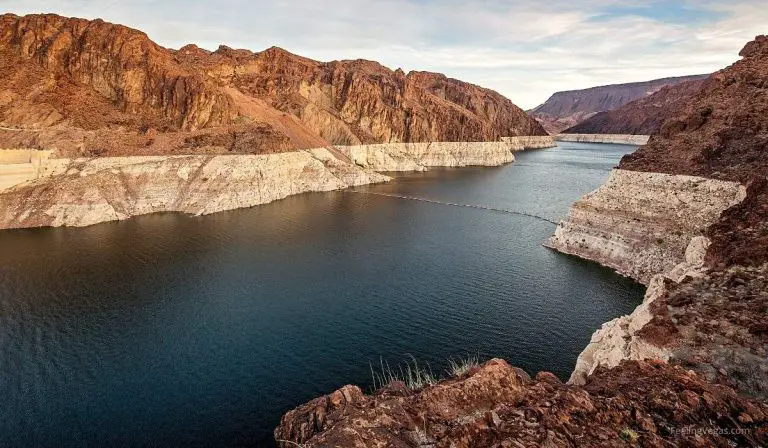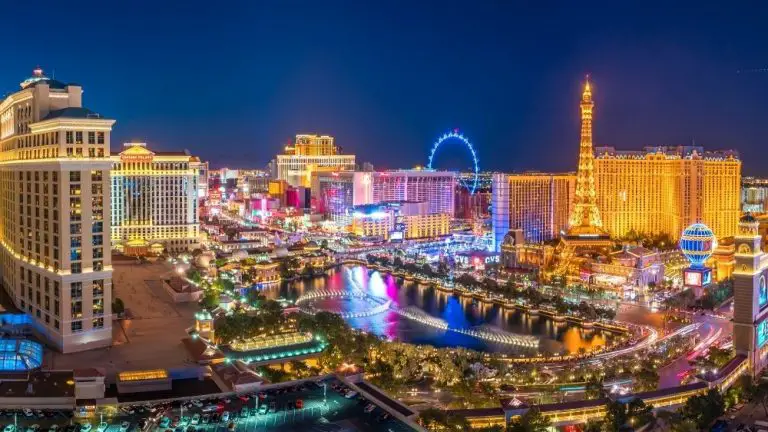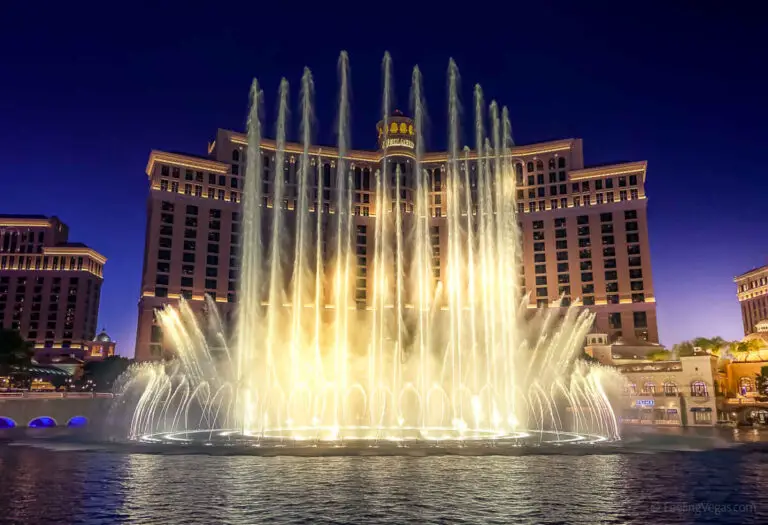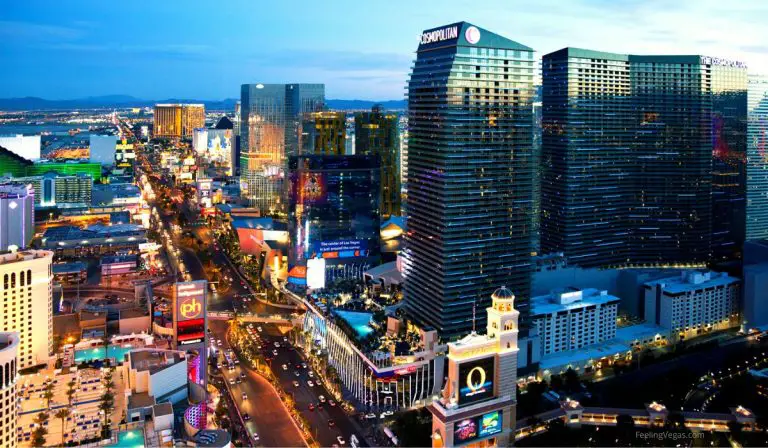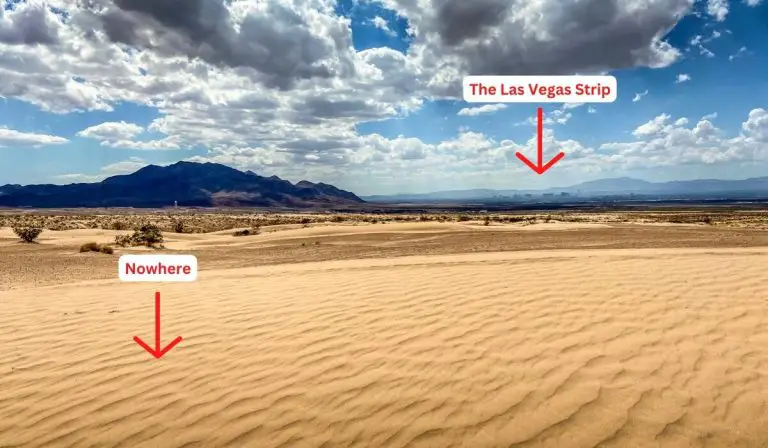Where Does Las Vegas Get Its Water? (How Long Until It’s Gone)
Las Vegas is big (population 2.2 million), it’s popular (42 million visitors a year), and it’s located in one of the driest deserts on the planet (Mojave Desert). So where does Las Vegas get its water, and how long will it last?
Las Vegas receives 90% of its water supply from the Colorado River via Lake Mead. The Lake Mead Reservoir (the largest reservoir in the United States) was created when nearby Hoover Dam was built. The remaining 10% of Las Vegas’s water supply comes from natural aquifers located deep underground.
Keep reading to find out more about the water supply in Las Vegas, Nevada, if there is a danger of running out, and how the Colorado River and Lake Mead are managed to ensure there is water available for everyone.
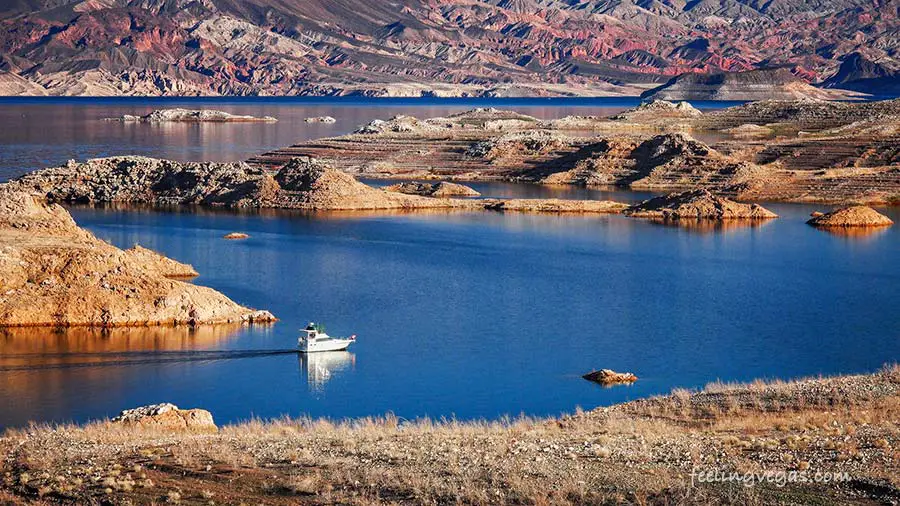
Las Vegas Water Supply
Las Vegas gets about ten percent of its water supply from groundwater sources. This means that one tenth of the city’s water comes from natural sources underneath the surface of the earth.
This proportion is so small, of course, because the Las Vegas valley is located in a desert, which is characteristically known for having extremely dry air and soil.
The majority (90 percent) of Las Vegas water comes from Lake Mead which is fed by the Colorado River.
Las Vegas receives billions of gallons of water from the Colorado River, but it is not the only city that is serviced by the long and expansive river.
In fact, Colorado River water supplies seven states and many western cities in this region of the country, meaning that its use as a resource is heavily governed and regulated.
(What is the drinking water quality in Las Vegas? Find out if the tap water is safe to drink in our article here).
The Effect of Drought on Las Vegas’s Water Supply
The Colorado River derives its water source from melting snow in the Rocky Mountains. Due to this, the amount of snowfall in the mountain region is crucial to determining how much water the river can supply to the cities and towns that depend on it.
Thus, due to a trend of rising global temperatures, the Colorado River has been considered under a drought for the past two decades.
A drought in the Colorado River does not mean that the river is at risk of running dry, but merely that there is a decline in the amount of snow melt to supply the river with water. With less water flowing from the Rocky Mountains down the Colorado River, there has been a consequential decline in the water levels of Lake Mead.
How Long Until The Water Runs Out in Las Vegas?
Although the water level in Lake Mead has been falling for decades, Las Vegas is not about to run dry anytime soon. As a man-made water reservoir on the Colorado River, Lake Mead is carefully monitored to ensure it can continue to supply water to the millions of people in Southern Nevada who depend on it.
Lake Mead’s water decline has become severe; however, southern Nevada has spent millions of dollars building a new water intake far below the lake’s surface that will likely continue to provide water for several decades.
The video below does an excellent job of explaining our water situation here in Las Vegas.
Water Conversation in The Las Vegas Valley
It is vital to pay attention to future trajectory when it comes to important resources like water. Being proactive about the potentially declining capabilities of the Colorado River is essential.
Many government agencies and independent entities are conducting extensive research on conservation methods that can protect the Colorado River from further drought moving forward.
Similarly, residents of Las Vegas are made well aware of the importance of water conservation in their desert climate by the local water authority.
Excessive water consumption is often discouraged, and the community is encouraged to do their part in ensuring that they are not using more than their fair share of the Colorado River’s water supply to the city and outer metropolitan areas of Las Vegas.
The Las Vegas Wash and Reclaimed Water
One of the big ways that Sin City conserves water is through the Las Vegas wash. The wash is a 12-mile-long “river” that runs through the Vegas valley. Any excess water in the city that ends up in a storm drain (i.e. rainwater, water from washing a car in the driveway, etc.), runs into the wash.
The water flows down the channel until it reaches a municipal water treatment plant which cleans the water and releases it back into the wash. Downstream from the treatment facility are the wetlands which naturally clean the water even further.
After the wetlands, this water ends up in Lake Las Vegas and eventually runs back into Lake Mead. In this way, the reclaimed water (approximately 90 million gallons a year) is returned to the reservoir. This helps to significantly reduce water usage in Las Vegas.
More Las Vegas Questions and Answers
- Why is Las Vegas Called Sin City?
- The Meaning of Viva Las Vegas
- Which Las Vegas Hotel Has a Replica of The Statue of David? (Pictures)
- Is The Grand Canyon in Las Vegas, Nevada?
References
Wikipedia: SVWA
Wikipedia: Colorado River
Bureau of Reclamation: Hoover Dam


